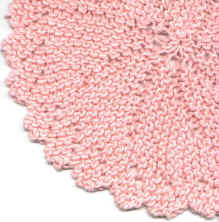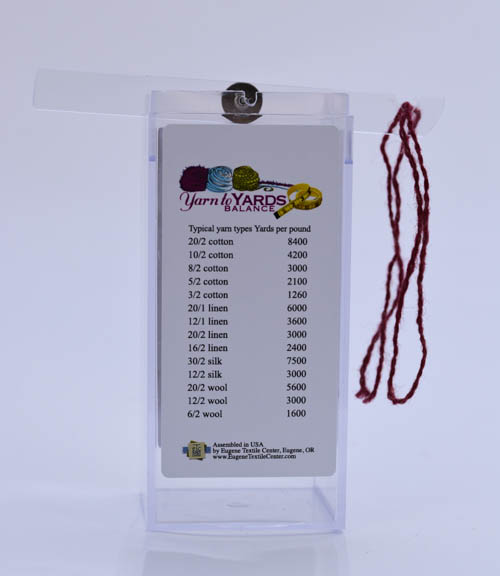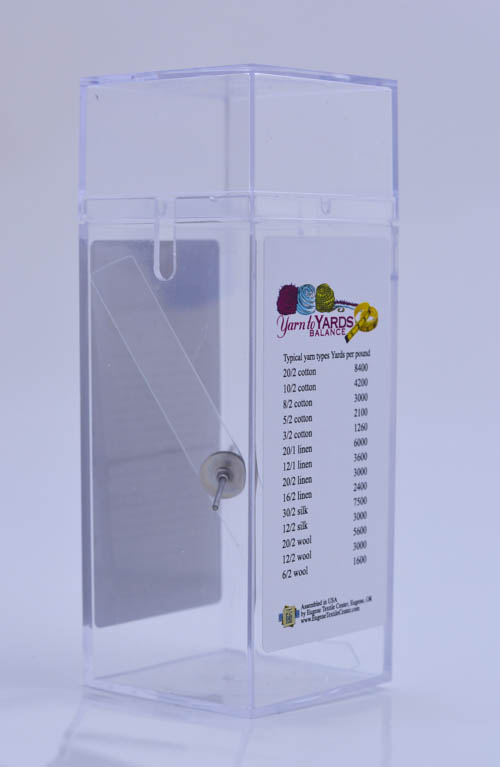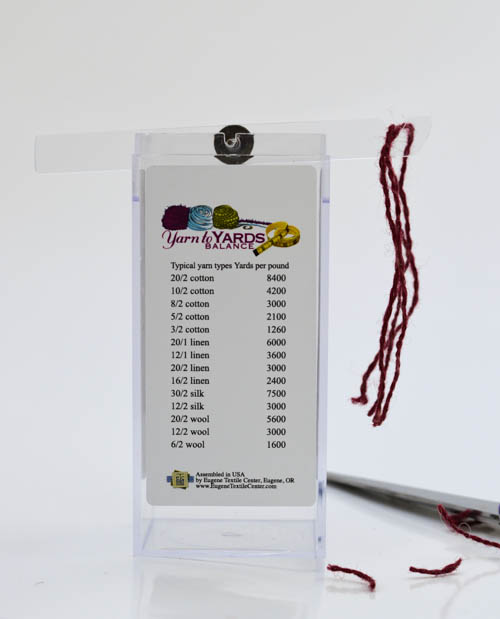(I couldn’t scan the whole dishcloth…hope this gives you an idea of how pretty it is! Also, a disclaimer: this is not my pattern. This is an old pattern that has been passed along by word of mouth for generations, or scribbled on index cards, and scraps of paper – I have not been able to trace the pattern to an original author.)
Finished Size: Depends on your individual gauge. Mine range from 10-12″ across.
Materials: 4-ply cotton yarn, such as Peaches and Cream; knitting needles of appropriate size to match the yarn (I use size 8).
Cast on 15 sts.
Row 1: knit
Row 2: k3, YO, k until one st remains on left needle. DO NOT KNIT LAST ST, turn.
Row 3 (and all odd rows): knit
Row 4: k3, YO, k until 2 sts rem on left ndl. Turn.
Row 6: k3, YO, k until 3 sts rem on left ndl. Turn.
Row 8: Bind off 3 sts, k2, YO, k until 4 sts rem on left ndl. Turn.
Row 10: k3, YO, k until 5 sts rem on left ndl. Turn.
Row12: k3, YO, k until 6 sts rem on left ndl. Turn.
Row 14: Bind off 3 sts, k2, YO, k until 7 sts rem on left ndl. Turn.
Row 16: k3, YO, k until 8 sts rem on left ndl. Turn.
Row 18: k3, YO, k until 9 sts rem on left ndl. Turn.
Row 20: Bind off 3 sts, knit across (15sts total).
Repeat rows 1-20 seven more times. Bind off, leaving a long tail for sewing the seam. Sew cast on edge to bind off edge, and sew around center and pull to close hole.
******************************************************************
To make a larger circle:
I recommend making one following the pattern above first, so you understand the flow, before using these rough notes on how to make a larger circle.
The number you cast on must be a multiple of 3 stitches. 15, 18, 21 ect.
We will now knit 8 wedges to finish the circle. How many rows each wedge has in it will change depending on how much you cast on.
First wedge:
Row 1: knit
Row 2: k3, YO, k until one st remains on left needle. DO NOT KNIT LAST ST, turn.
Row 3 (and all odd rows): knit
Row 4: k3, YO, k until 1 more stitch then last time sts remains on left ndl. Turn.
Row 6: k3, YO, k until 1 more stitch then last time remains on left ndl. Turn.
*Row 8: Bind off 3 sts, k2, YO, k until 1 more stitch then last time remains on left ndl. Turn. (this row creates what I refer to as a scallop. This row will be different on the very last scallop of each wedge. See below)
Repeat these 8 rows, until the row 8 in which you have created 1 less scallop then multiple of 3 you cast on. So if you cast on 15 stitches, each wedge will have 4 scallops in it. If you cast on 21 stitches, each wedge will have 6 scallops in it.
On the last row 8 of your wedge, do not yarn over, and do not turn. On that last row 8 of each wedge, you will cast off three, and then you will knit to the end of the row. You should have the same number of stitches here that you had when you cast on.
This is 1 wedge completed. Now start back at row 1. Repeat for a total of 7 wedges.
I hope that makes sense, let me know of any advice on how to write that more succinctly.
-

Yarn to Yard Balance
$35.00Yarn to Yard Balance
$35.00The quickest way to get a good idea how many yards you have in a skein, pound, cone, or ball.
Quick View -

Acrylic Knitting Needle Gauges
$10.00Quick ViewSelect options This product has multiple variants. The options may be chosen on the product page -

Trolley Needle / Cable Needle
$12.00Quick View











